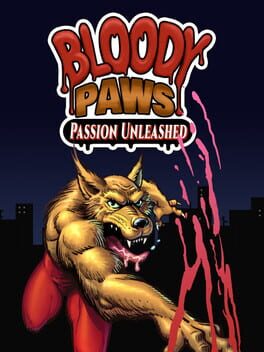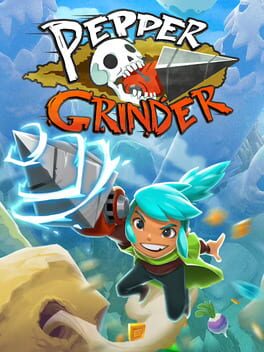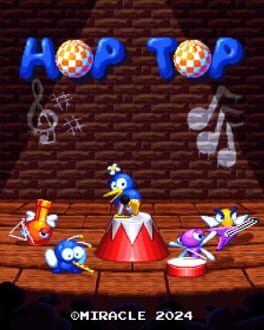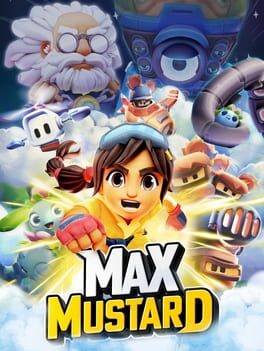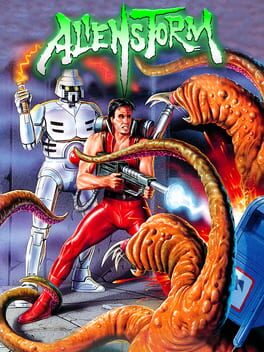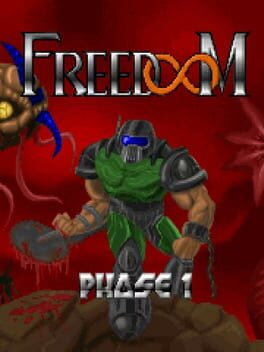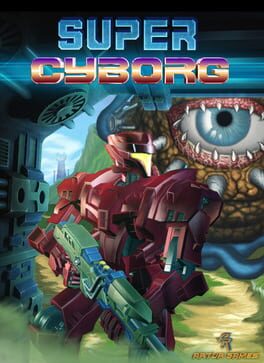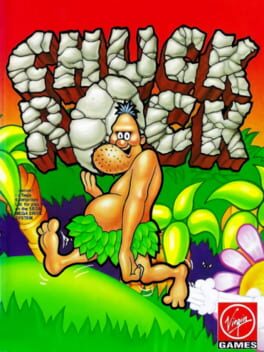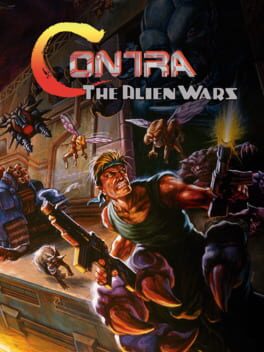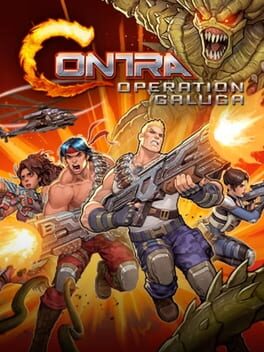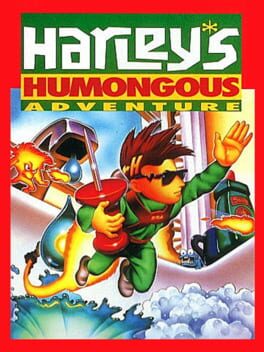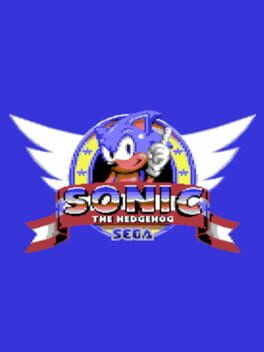evy96
2024
This developer never seems to miss no matter what breed of shm'up they decide to tackle next, and Missile Dancer 2 is no exception. I'm not the biggest fan of rail shooters like Space Harrier, but I still found myself enjoying this one immensely.
The game mimmicks Sega's classic super scaler arcade games and plays similarly to the aforementioned space harrier, after burner and super thunder blade. That being said, it's somewhat more forgiving due to having three hit points and waves that weren't meant to munch quarters. I feel like anyone with a passing interest in the genre could pick this up and play it without being frustrated too much, at least on normal. (There is of course hard and expert, so it's not like the people who live for these kinds of games are necessarily left out)
The only real issue with this game is the same issue I've had with the older quarter munchers in this genre- visibility. Even after multiple playthroughs, I still had moments where I'm not exactly sure what hit me due to the perspective. There are also white puffs of smoke that cloud the screen whenever you use your missiles (which you'll be using quite a bit) and they just so happen to be the same color as the regular bullets coming from enemy crafts. One other person actually pointed this out on steam, but the dev's response claimed that adding transparency would "change the design" of the game. Weird.
I do hope that issue gets resolved at some point, but as it stands, this is still another great game that provides an arcade experience sans the steep learning curve. If you enjoyed the dev's other games (raging Blasters, terraflame to name a few) you should enjoy this as well.
The game mimmicks Sega's classic super scaler arcade games and plays similarly to the aforementioned space harrier, after burner and super thunder blade. That being said, it's somewhat more forgiving due to having three hit points and waves that weren't meant to munch quarters. I feel like anyone with a passing interest in the genre could pick this up and play it without being frustrated too much, at least on normal. (There is of course hard and expert, so it's not like the people who live for these kinds of games are necessarily left out)
The only real issue with this game is the same issue I've had with the older quarter munchers in this genre- visibility. Even after multiple playthroughs, I still had moments where I'm not exactly sure what hit me due to the perspective. There are also white puffs of smoke that cloud the screen whenever you use your missiles (which you'll be using quite a bit) and they just so happen to be the same color as the regular bullets coming from enemy crafts. One other person actually pointed this out on steam, but the dev's response claimed that adding transparency would "change the design" of the game. Weird.
I do hope that issue gets resolved at some point, but as it stands, this is still another great game that provides an arcade experience sans the steep learning curve. If you enjoyed the dev's other games (raging Blasters, terraflame to name a few) you should enjoy this as well.
2024
It's Drill Wisp- The Game.
In all seriousness this is a serviceable bite sized platformer with pacing similar to that of DKC. Like Ristar, it takes one primary mechanic (being the drilling in this case) and stretches it to its absolute limit. Some of the things this game does with the mechanic are pretty fantastic. The game is at its best when you're using the thing to blast through chunks of ice to scale a waterfall or powering up a giant robot to plow through obstacles.
Unfortunately, the game's combat is just not fun and it just so happens that two of the major levels (bear in mind this game is only four worlds long and personally took me 3.5 hours to finish) decide to focus on this aspect. 4-4 was absolutely fucking miserable as it crams in an overly long elevator sequence and a mini-boss with no checkpoint in between.
As mentioned before, this is also a really short game. Typically, I don't have a problem with this but it left me wanting more in a bad way. It feels more like a demo or early access edition. Baffingly enough, the game apparently took eight years to make. You'll most definitely get more than I did out of it if you happen to be apart of the speedrunning niche, as there are time trials and the par times are pretty unforgiving. Even then, it's still kinda anemic in content.
As one other reviewer has suggested- wait for a sale. (Unless you're obsessed with speedruns)
In all seriousness this is a serviceable bite sized platformer with pacing similar to that of DKC. Like Ristar, it takes one primary mechanic (being the drilling in this case) and stretches it to its absolute limit. Some of the things this game does with the mechanic are pretty fantastic. The game is at its best when you're using the thing to blast through chunks of ice to scale a waterfall or powering up a giant robot to plow through obstacles.
Unfortunately, the game's combat is just not fun and it just so happens that two of the major levels (bear in mind this game is only four worlds long and personally took me 3.5 hours to finish) decide to focus on this aspect. 4-4 was absolutely fucking miserable as it crams in an overly long elevator sequence and a mini-boss with no checkpoint in between.
As mentioned before, this is also a really short game. Typically, I don't have a problem with this but it left me wanting more in a bad way. It feels more like a demo or early access edition. Baffingly enough, the game apparently took eight years to make. You'll most definitely get more than I did out of it if you happen to be apart of the speedrunning niche, as there are time trials and the par times are pretty unforgiving. Even then, it's still kinda anemic in content.
As one other reviewer has suggested- wait for a sale. (Unless you're obsessed with speedruns)
2024
I can't say this is my favorite game to come of the $5-psuedo arcade game trend that I've seen take place over the past couple years, but it's still a solid effort and fully worth your time. Essentially, Hop Top meshes a contemporary mobile game (Doodle Jump) with the arcade classic Galaxian. It's a novel idea, but I feel like the execution is hurt a bit by its randomness in the main campaign.
The formations stay the same, but depending on your luck, it seems like you may either get a really easy set of obstacles to contend with or a harder set. You may get 1-ups and plenty of power-ups (keep in mind that, in campaign mode, you don't get extends based on scoring at all) or you may not. I understand that a lot of people love roguelike design, and by default arcade games always do have a bit of randomness to them, but I much prefer the "fixed" layouts of games like Donut Dodo and Cash Cow.
Still, despite my gripes, this is a fun pick-up-play experience and I will give it credit for going out of its way in a way even my favorites didn't. You actually get two games in one here- an arcade mode that shows what "Hop Top" would've looked like in the 80's and a campaign mode that gives the game a gorgeous 32 bit makeover. This was brilliant, and the latter gives off serious "Arranged Mode" vibes from the Namco Museum collections in the PS2 era for those old enough to remember. I would love to see this kind of thing done more often.
The formations stay the same, but depending on your luck, it seems like you may either get a really easy set of obstacles to contend with or a harder set. You may get 1-ups and plenty of power-ups (keep in mind that, in campaign mode, you don't get extends based on scoring at all) or you may not. I understand that a lot of people love roguelike design, and by default arcade games always do have a bit of randomness to them, but I much prefer the "fixed" layouts of games like Donut Dodo and Cash Cow.
Still, despite my gripes, this is a fun pick-up-play experience and I will give it credit for going out of its way in a way even my favorites didn't. You actually get two games in one here- an arcade mode that shows what "Hop Top" would've looked like in the 80's and a campaign mode that gives the game a gorgeous 32 bit makeover. This was brilliant, and the latter gives off serious "Arranged Mode" vibes from the Namco Museum collections in the PS2 era for those old enough to remember. I would love to see this kind of thing done more often.
2024
To put it blunt, I loved Astro Bot Rescue Mission. It's like one of 15 or so games I bothered to get a platinum trophy on and was the sole reason I even bought a PSVR in the first place. It was everything I could have possibly wanted out of a linear 3D platform in VR- insanely charming, constantly introducing new gimmicks and mechanics and offered a bit of challenge when scouring for collectibles.
Max Mustard is essentially diet Astro Bot. This isn't necessarily a bad thing as, outside of Lucky's Tale and Ven, there are basically no other traditional 3D platformers on Quest (that I am aware of). Considering how great Astro Bot (and Lucky) were, I was dying for more of the same.
I'd be lying if I said I didn't have fun, but outside from lacking its own identity, this game also suffers from being way too easy (for the most part) and not really making the most out of its gimmicks. In Astro Bot, you really had to look around to find your captured buddies. Here, the mud puppies (this game's primary macguffin) are almost always in plain sight and you barely have to go out of your way even when they're not. Sometimes you'll use a fan to open doors or push a platform along, but it's not as exciting as guiding your character along a rope created by a hookshot or using a flashlight to illuminate platforms (referring to Astro bot yet again).
Even though I did have fun playing it through and it does get the basics of the genre right, I was left wanting a bit more (in the bad way) factoring in the 30 dollar price tag. I know, bringing up price in a review is kind of tacky, but it's hard not to considering Astro Bot launched for 10 dollars less and offered quite a bit more. Lucky's Tale also launched at 20 dollars for Quest 2 a couple years ago, and while it still didn't feel like a full fledged adventure, it definitely had more depth and polish.
As it stands, Max Mustard is slightly above average. It doesn't necessarily do anything wrong, but it also feels incredibly safe and by-the-numbers. I'd advise playing Lucky first if you haven't already and waiting for a sale.
Max Mustard is essentially diet Astro Bot. This isn't necessarily a bad thing as, outside of Lucky's Tale and Ven, there are basically no other traditional 3D platformers on Quest (that I am aware of). Considering how great Astro Bot (and Lucky) were, I was dying for more of the same.
I'd be lying if I said I didn't have fun, but outside from lacking its own identity, this game also suffers from being way too easy (for the most part) and not really making the most out of its gimmicks. In Astro Bot, you really had to look around to find your captured buddies. Here, the mud puppies (this game's primary macguffin) are almost always in plain sight and you barely have to go out of your way even when they're not. Sometimes you'll use a fan to open doors or push a platform along, but it's not as exciting as guiding your character along a rope created by a hookshot or using a flashlight to illuminate platforms (referring to Astro bot yet again).
Even though I did have fun playing it through and it does get the basics of the genre right, I was left wanting a bit more (in the bad way) factoring in the 30 dollar price tag. I know, bringing up price in a review is kind of tacky, but it's hard not to considering Astro Bot launched for 10 dollars less and offered quite a bit more. Lucky's Tale also launched at 20 dollars for Quest 2 a couple years ago, and while it still didn't feel like a full fledged adventure, it definitely had more depth and polish.
As it stands, Max Mustard is slightly above average. It doesn't necessarily do anything wrong, but it also feels incredibly safe and by-the-numbers. I'd advise playing Lucky first if you haven't already and waiting for a sale.
1990
I walked away enjoying this far more than Golden Axe and the first SOR. It's a bit faster paced and you have the ability to run as well as dodge roll which makes it feel surprisingly modern for an early brawler. The on-rails shooting sections also help break up the monotony that plagues even the best in the genre- the final boss being set up this way really took me by surprise.
It can still play a little dirty in some spots as it is a port of an arcade quarter muncher (I just like saying that because I know it triggers elitists like Mark from the electric underground haha). For instance, there were spots in those aforementioned shooting sections where taking damage seemed inevitable as you're using a slow moving cursor. At least there aren't bosses who can one shot or chop your life bar in half like SOR or anything remotely close to the bullshit that is Golden Axe's magic spamming final boss.
Despite its problems, I think this may be one of my favorite early titles on the Genny alongside GnG and the fantastic port of forgotten worlds.
It can still play a little dirty in some spots as it is a port of an arcade quarter muncher (I just like saying that because I know it triggers elitists like Mark from the electric underground haha). For instance, there were spots in those aforementioned shooting sections where taking damage seemed inevitable as you're using a slow moving cursor. At least there aren't bosses who can one shot or chop your life bar in half like SOR or anything remotely close to the bullshit that is Golden Axe's magic spamming final boss.
Despite its problems, I think this may be one of my favorite early titles on the Genny alongside GnG and the fantastic port of forgotten worlds.
2003
This is a mostly fun set of episodes to go through in VR with QuestZDoom- which is how I went about playing the entirely of Freedoom. Each episode brings larger maps and a (for the most part) solid difficulty curve. By episode 4, you're going to see 200+ monster counts and while that seems daunting its all manageable with careful play.
It's too bad that the campaign ends off with what's basically a troll level, and the last few missions had a few too many random ambushes for my liking. Still had a great time up to that point at least.
It's too bad that the campaign ends off with what's basically a troll level, and the last few missions had a few too many random ambushes for my liking. Still had a great time up to that point at least.
As was the case with Tanuki Justice, I'm surprised people on here seem to dislike this game.
Flying Hero is a vertical cute 'em up with an aesthetic that reminds me of Kirby above all else. You get three different power ups (although one of them is pretty much useless), bombs and homing missiles on top of the ability to curve your blasts by tapping the shoulder buttons. In addition, you have a hit point system similar to some Compile games where getting hit will just take you down a level with death occurring if struck holding a tier 1 weapon.
The way powering up actually works in this game is a bit confusing. Unlike most other shmups, collecting the same weapon two or three times will not increase its strength. Instead, you need to collect three cupcakes for level 2 and another three to be at full power. It sounds confusing, but even an idiot like me was able to adjust. It's also quite easy to manipulate this system- just avoid the cupcakes if you have two (kept track of in the right hand corner of the screen) and full power. Next time you get hit, you can just snag the third one and be back at the tier you were on before.
Design wise, flying hero really doesn't do anything too unique other than the curving shot trick but it more than makes up for it in charm. The whole time I was playing...it felt like something I would've loved as a kid had I discovered it in the early 2000s around the same time I was enamored with Kirby, monkey ball and klonoa. Sure, Twinbee is better, but I still found a lot to like here in the seven stages presented.
I do have two grievances to bring up other than the somewhat odd powerup system. First, your character sprite is pretty damn big for a shmup. It's a good thing that the bullet density is kept pretty low or else this would've made the game frustrating. It also explains why the health system is so forgiving- this would not have bode well under normal shmup rules. Second is that none of the three speeds really felt right. Speed 1 was a bit too slow, speed 2 is zippier than I would've liked, and I only used 3 on the final boss' last phase since he charges at you incessantly.
That said, the game is still worth playing especially if you're looking for an easier entry in the genre to play and finish in under an hour. Just don't expect it to be among the best of the best or brimming with originality.
Flying Hero is a vertical cute 'em up with an aesthetic that reminds me of Kirby above all else. You get three different power ups (although one of them is pretty much useless), bombs and homing missiles on top of the ability to curve your blasts by tapping the shoulder buttons. In addition, you have a hit point system similar to some Compile games where getting hit will just take you down a level with death occurring if struck holding a tier 1 weapon.
The way powering up actually works in this game is a bit confusing. Unlike most other shmups, collecting the same weapon two or three times will not increase its strength. Instead, you need to collect three cupcakes for level 2 and another three to be at full power. It sounds confusing, but even an idiot like me was able to adjust. It's also quite easy to manipulate this system- just avoid the cupcakes if you have two (kept track of in the right hand corner of the screen) and full power. Next time you get hit, you can just snag the third one and be back at the tier you were on before.
Design wise, flying hero really doesn't do anything too unique other than the curving shot trick but it more than makes up for it in charm. The whole time I was playing...it felt like something I would've loved as a kid had I discovered it in the early 2000s around the same time I was enamored with Kirby, monkey ball and klonoa. Sure, Twinbee is better, but I still found a lot to like here in the seven stages presented.
I do have two grievances to bring up other than the somewhat odd powerup system. First, your character sprite is pretty damn big for a shmup. It's a good thing that the bullet density is kept pretty low or else this would've made the game frustrating. It also explains why the health system is so forgiving- this would not have bode well under normal shmup rules. Second is that none of the three speeds really felt right. Speed 1 was a bit too slow, speed 2 is zippier than I would've liked, and I only used 3 on the final boss' last phase since he charges at you incessantly.
That said, the game is still worth playing especially if you're looking for an easier entry in the genre to play and finish in under an hour. Just don't expect it to be among the best of the best or brimming with originality.
2014
Was Contra on the NES not hard enough for you? This guy most definitely heard you. I have 1 life cleared the original Contra and Super C and tbh just beating this game is going to be harder than doing those two games back to back. Not for the faint of heart. Got sick of trying the final elevator sequence and multiple phase final boss over and over but may try again later.
1993
Yet another stop on my never-ending journey to complete every animal themed platformer in existence.
Ardy Lightfoot is perhaps even less remembered than Bubsy or Aero the Acrobat, and I'm sure that "Titus" logo had something to do with it. Even before they dumped Super Man 64 on us, they weren't exactly running toe to toe with third party publishers like Capcom nor Konami. It stars what I'm assuming be some sort of cat or fox accompanied by Pepe-At-Home (seriously...I bet these guys were fans of Monster World IV) in a quest to retreive the seven Chaos Emeralds-At-Home.
One thing Ardy does exceptionally well compared to other B-tier mascot games is (surprisingly) storytelling. Everything is told through pantomime cutscenes like Sonic 3 and Knuckles, granted these are a bit more extensive. To cap it all off, there's a beautiful (non-interactive) world map showing the characters' progression. The in-game art is also pretty solid, although not mindblowing for 1994.
Unfortunately, the game stumbles where it matters most- gameplay. It does, however, start out strong. You'll be using Ardy's signature tail bounce move to scale vertical sections and tossing your buddy (who also serves as a hit point similar to those weird fuzzy things in Psycho Fox) about to solve puzzles and kill enemies. By the time you reach the pyramid scene, however, the game starts introducing massive difficulty spikes and doesn't organically explain certain mechanics.
One such stage is Beecroft's Stronghold, which introduces security cameras that deploy traps if Ardy is caught. At first, I thought this was a stealth section and that said traps/cameras could be avoided by hiding underneath certain platforms until the camera faces away. Nope- you basically have to run for it every time as the traps will always spring up. There's another section like this in Ancient Pyramid, where you would think there's a way to avoid a beam of light that triggers an avalanche of randomly generated spikes. Nope- you just have to deal with it and hope you don't take a hit.
Underground Passage redeems things a bit and sees you powering-up your buddy so that he can chomp through otherwise indestructible blocks. You'll also be looking for switches to pull in order raise the water level and make your way out of the scene. It made me wonder why more levels couldn't have this sort of pacing and sense of exploration, honestly.
The last few stages focus on scaling a tower and are ungodly annoying due to the iffy collision detection. Using a bunch of spears to make your way up would've been an alright idea if Ardy's lust for clipping through them wasn't so high.
Then there's a long autoscroller where you're assaulted by a bunch of electric spears. While you could try to memorize where they come from and what you need to jump, duck or tail-bounce over...there's one thing I haven't mentioned yet. By holding up, Ardy can pull out a mirror which (for whatever reason) shields him from attacks for a decent period of time. The catch is that it's stationary, has a brief window before it triggers and he'll eventually put it away regardless of if you let go of up or not. Considering this section is long as hell, you only get one hitpoint via Pec (the aforementioned buddy) and no checkpoints here- I opted to cheese it by timing my mirror shields properly.
While the game is tough (bordering on unforgiving in the late game), it does have enough concessions. You have unlimited continues, many of the scenes are fairly short, and there's often a ton of stars (this game's coins) or a 1-up around the difficult sections. In addition, if you lose Pec, it's often not long before you find him waiting in a chest nearby. It doesn't fix that some levels are simply miserable to get through, but at least you'll never lose much progress at any point.
Overall, Ardy is worth a once-over if you're willing to adjust to its crap factor and have already played the better platformers on the SNES. Slightly better than Bubsy, but a far cry from the likes of Sparkster.
Ardy Lightfoot is perhaps even less remembered than Bubsy or Aero the Acrobat, and I'm sure that "Titus" logo had something to do with it. Even before they dumped Super Man 64 on us, they weren't exactly running toe to toe with third party publishers like Capcom nor Konami. It stars what I'm assuming be some sort of cat or fox accompanied by Pepe-At-Home (seriously...I bet these guys were fans of Monster World IV) in a quest to retreive the seven Chaos Emeralds-At-Home.
One thing Ardy does exceptionally well compared to other B-tier mascot games is (surprisingly) storytelling. Everything is told through pantomime cutscenes like Sonic 3 and Knuckles, granted these are a bit more extensive. To cap it all off, there's a beautiful (non-interactive) world map showing the characters' progression. The in-game art is also pretty solid, although not mindblowing for 1994.
Unfortunately, the game stumbles where it matters most- gameplay. It does, however, start out strong. You'll be using Ardy's signature tail bounce move to scale vertical sections and tossing your buddy (who also serves as a hit point similar to those weird fuzzy things in Psycho Fox) about to solve puzzles and kill enemies. By the time you reach the pyramid scene, however, the game starts introducing massive difficulty spikes and doesn't organically explain certain mechanics.
One such stage is Beecroft's Stronghold, which introduces security cameras that deploy traps if Ardy is caught. At first, I thought this was a stealth section and that said traps/cameras could be avoided by hiding underneath certain platforms until the camera faces away. Nope- you basically have to run for it every time as the traps will always spring up. There's another section like this in Ancient Pyramid, where you would think there's a way to avoid a beam of light that triggers an avalanche of randomly generated spikes. Nope- you just have to deal with it and hope you don't take a hit.
Underground Passage redeems things a bit and sees you powering-up your buddy so that he can chomp through otherwise indestructible blocks. You'll also be looking for switches to pull in order raise the water level and make your way out of the scene. It made me wonder why more levels couldn't have this sort of pacing and sense of exploration, honestly.
The last few stages focus on scaling a tower and are ungodly annoying due to the iffy collision detection. Using a bunch of spears to make your way up would've been an alright idea if Ardy's lust for clipping through them wasn't so high.
Then there's a long autoscroller where you're assaulted by a bunch of electric spears. While you could try to memorize where they come from and what you need to jump, duck or tail-bounce over...there's one thing I haven't mentioned yet. By holding up, Ardy can pull out a mirror which (for whatever reason) shields him from attacks for a decent period of time. The catch is that it's stationary, has a brief window before it triggers and he'll eventually put it away regardless of if you let go of up or not. Considering this section is long as hell, you only get one hitpoint via Pec (the aforementioned buddy) and no checkpoints here- I opted to cheese it by timing my mirror shields properly.
While the game is tough (bordering on unforgiving in the late game), it does have enough concessions. You have unlimited continues, many of the scenes are fairly short, and there's often a ton of stars (this game's coins) or a 1-up around the difficult sections. In addition, if you lose Pec, it's often not long before you find him waiting in a chest nearby. It doesn't fix that some levels are simply miserable to get through, but at least you'll never lose much progress at any point.
Overall, Ardy is worth a once-over if you're willing to adjust to its crap factor and have already played the better platformers on the SNES. Slightly better than Bubsy, but a far cry from the likes of Sparkster.
1991
A very run-of-the-mill western developed platformer- slightly below average but has its charm.
Chuck Rock's main gimmick is, as you might expect, throwing around stones. To be fair, the game does have some decent concepts centered around this. You can actually use rocks to block incoming attacks from above (especially useful in the second world) and will also need to stack them in order to reach otherwise inaccessible areas.
Unfortunately, Chuck Rock drops the ball in almost every other department. Chuck himself is a rather ugly sprite to look at. I get it, he's a neanderthal, but he could've at least been a bit more stylized like Bonk or Joe and Mac. Fortunately, the enemies and backgrounds fare a bit better but are still not impressive by any stretch.
Then there's the "combat". Although running around and jumping is totally fine, the two attacks you can pull off are incredibly short ranged and don't have the best hit detection. There's this weird belly thrust thing that works about half the time, and then there's a jump kick which is somewhat more reliable but will require you to jump around like an idiot at times. This game really would have benefited from some sort of projectile weapon (even with limited ammo) or power-ups.
Bosses? What bosses? Only two of them require any sort of strategy at all and the rest can be downed by spamming attack no problem.
Level design is about as bare bones as it gets, but I will give the Sega Genesis version credit over the SNES version for actually rewarding exploration. There's plenty of random items and junk food to pick up along the way, with larger (and often out of the way) collectibles netting far more points. After every 100,000 pts you'll gain a 1-up, which doesn't happen on the SNES.
Sadly, though, even the way the levels are built can sometimes be problematic. I encountered two situations in which I got soft locked due to throwing a rock where I shouldn't have. In the first instance, it was fine as I could simply wait for an enemy to drop down and kill me. The second, however, required a console reset.
As poor as this game is, I can't bring myself to hate it due to adoring the whole 90's prehistoric trope. The first few stages were somewhat enjoyable, the cavern music is actually a serious bop and the whole game is mercifully short (30-40 minutes). Do yourself a favor, though, and just play any of the Joe and Mac games or Congo's Caper if you need your fix of stone age sidescrolling.
Chuck Rock's main gimmick is, as you might expect, throwing around stones. To be fair, the game does have some decent concepts centered around this. You can actually use rocks to block incoming attacks from above (especially useful in the second world) and will also need to stack them in order to reach otherwise inaccessible areas.
Unfortunately, Chuck Rock drops the ball in almost every other department. Chuck himself is a rather ugly sprite to look at. I get it, he's a neanderthal, but he could've at least been a bit more stylized like Bonk or Joe and Mac. Fortunately, the enemies and backgrounds fare a bit better but are still not impressive by any stretch.
Then there's the "combat". Although running around and jumping is totally fine, the two attacks you can pull off are incredibly short ranged and don't have the best hit detection. There's this weird belly thrust thing that works about half the time, and then there's a jump kick which is somewhat more reliable but will require you to jump around like an idiot at times. This game really would have benefited from some sort of projectile weapon (even with limited ammo) or power-ups.
Bosses? What bosses? Only two of them require any sort of strategy at all and the rest can be downed by spamming attack no problem.
Level design is about as bare bones as it gets, but I will give the Sega Genesis version credit over the SNES version for actually rewarding exploration. There's plenty of random items and junk food to pick up along the way, with larger (and often out of the way) collectibles netting far more points. After every 100,000 pts you'll gain a 1-up, which doesn't happen on the SNES.
Sadly, though, even the way the levels are built can sometimes be problematic. I encountered two situations in which I got soft locked due to throwing a rock where I shouldn't have. In the first instance, it was fine as I could simply wait for an enemy to drop down and kill me. The second, however, required a console reset.
As poor as this game is, I can't bring myself to hate it due to adoring the whole 90's prehistoric trope. The first few stages were somewhat enjoyable, the cavern music is actually a serious bop and the whole game is mercifully short (30-40 minutes). Do yourself a favor, though, and just play any of the Joe and Mac games or Congo's Caper if you need your fix of stone age sidescrolling.
Not as good as Operation C, but still an impressive port. A lot of bosses had to be cut as well as the bike stage (which I'm actually okay with- there was just way too much RNG involved on anything past normal), leaving us with just five total stages this time. The awkward overhead stages are also back, but they're not nearly as awkward this time around since there's no scaling nor rotation since the gameboy lacked shoulder buttons.
It's also worth noting that, at least in my playthrough on normal, fire seems to be the go-to weapon here when it comes to DPS. Pretty interesting considering the best weapon in the SNES game was hot-swapping between two crushers.
This version does do one thing better than Contra 3 on the SNES in my opinion- it gives you an actual ending for playing on normal. One of my biggest gripes with the SNES version is that it forces you to play on hard in order to get anything other than a wall of text. I always thought this was incredibly stupid and pretentious (and I await your hate replies with open arms for saying it, lol).
It's also worth noting that, at least in my playthrough on normal, fire seems to be the go-to weapon here when it comes to DPS. Pretty interesting considering the best weapon in the SNES game was hot-swapping between two crushers.
This version does do one thing better than Contra 3 on the SNES in my opinion- it gives you an actual ending for playing on normal. One of my biggest gripes with the SNES version is that it forces you to play on hard in order to get anything other than a wall of text. I always thought this was incredibly stupid and pretentious (and I await your hate replies with open arms for saying it, lol).
Obnoxious price aside, I found myself enjoying this a lot more than Wayforward's other Contra game (Contra 4). The biggest additions to the formula here are a perk system and the ability to "overcharge" your weapons. Basically, you can sacrifice them for a host of unique temporary power-ups such as slowing down time (laser) or sending a heap of bullets bouncing across the screen (spread). In addition to this, you can actually upgrade said weapons by picking up two of the same without getting hit. I had a lot of fun messing around with these mechanics in the handful of arcade mode runs I've done so far.
Overall I'd say this would be a great starting point for newbies thanks to how flexible it is in terms of difficulty, and not a bad entry for hardcore players since you can make the game as hard as you'd like (one-hit kill mode, no perks). As it stands, though, forty is probably going to be too much for most people and I get it. If it weren't for the fact that there aren't too many new games coming out that I want, I probably wouldn't have snatched this up day one.
Overall I'd say this would be a great starting point for newbies thanks to how flexible it is in terms of difficulty, and not a bad entry for hardcore players since you can make the game as hard as you'd like (one-hit kill mode, no perks). As it stands, though, forty is probably going to be too much for most people and I get it. If it weren't for the fact that there aren't too many new games coming out that I want, I probably wouldn't have snatched this up day one.
This game refers to 1ups as "free dudes" in the demo that plays if you leave it hanging for a while. That's about the most 90's thing I've ever seen.
In all seriousness, this is a pretty decent platformer considering it's western made (something I've noticed a lot of people in these circles tend to loathe when it comes to older games for some reason). You're a scientist who has found himself shrunk down due to a freak lab accident and now has to retrieve machine parts stolen by mutated bugs.
Levels are mostly linear until the end and take you anywhere from a kitchen to the backyard. You'll find yourself picking up everyday items such as paperclips and thumb tacks to take out enemies, collect bolts (aka coins) and even jetfuel so that you can fly around on a gnarly jetpack.
Control wise, the game handles fine enough considering that it's shooting for that pre-rendered/claymation look that became popular in the mid 90's. I didn't care for the fact that the jump height can't be varied- if you ever played Kid Niki on the NES it's basically the same kind of jump. You'll get used to it after a stage or two, but it is annoying.
Although the level design itself is nothing special, there are a handful of interesting ideas here and there that make the game just worth that single playthrough. One stage, for instance, has you knocking a sponge into the sink so that you can run across it to generate bubbles. Then, you'll float to the top of the stage where the part is hidden. You're even able to explore the sink's pipelines for extra goodies, but it's risky due to the amount of traps and limited air supply.
This is a short game and a relatively easy playthrough outside of the backyard and lab stages (which are perhaps a bit too mazey for their own good). If you're not vehemently against euro-style games and are in the mood for something that screams "1993", you could definitely do far worse.
In all seriousness, this is a pretty decent platformer considering it's western made (something I've noticed a lot of people in these circles tend to loathe when it comes to older games for some reason). You're a scientist who has found himself shrunk down due to a freak lab accident and now has to retrieve machine parts stolen by mutated bugs.
Levels are mostly linear until the end and take you anywhere from a kitchen to the backyard. You'll find yourself picking up everyday items such as paperclips and thumb tacks to take out enemies, collect bolts (aka coins) and even jetfuel so that you can fly around on a gnarly jetpack.
Control wise, the game handles fine enough considering that it's shooting for that pre-rendered/claymation look that became popular in the mid 90's. I didn't care for the fact that the jump height can't be varied- if you ever played Kid Niki on the NES it's basically the same kind of jump. You'll get used to it after a stage or two, but it is annoying.
Although the level design itself is nothing special, there are a handful of interesting ideas here and there that make the game just worth that single playthrough. One stage, for instance, has you knocking a sponge into the sink so that you can run across it to generate bubbles. Then, you'll float to the top of the stage where the part is hidden. You're even able to explore the sink's pipelines for extra goodies, but it's risky due to the amount of traps and limited air supply.
This is a short game and a relatively easy playthrough outside of the backyard and lab stages (which are perhaps a bit too mazey for their own good). If you're not vehemently against euro-style games and are in the mood for something that screams "1993", you could definitely do far worse.
2021
I'm one of those people who really likes Sonic 1 8-bit, so this was a treat even if I'm not a big fan of the Commodore 64 outside of Giana Sisters. This manages to not only be an impressive port, but in some ways, it is even better than its source material.
>In Jungle Zone Act 2, dropping down will no longer kill you
>There is basically no slowdown in Labyrinth Zone, which is a big deal as it caused copious amounts of slow down in both the Master System and Game Gear version.
The only problem for some such as myself would be getting the thing to run. I did not have a C64 growing up so figuring out the emulator was a bit of a PITA, but it was well worth it!
>In Jungle Zone Act 2, dropping down will no longer kill you
>There is basically no slowdown in Labyrinth Zone, which is a big deal as it caused copious amounts of slow down in both the Master System and Game Gear version.
The only problem for some such as myself would be getting the thing to run. I did not have a C64 growing up so figuring out the emulator was a bit of a PITA, but it was well worth it!
